3-(4-METHOXYPHENYL)PYRAZOLE
Modify Date: 2024-01-07 11:36:10

3-(4-METHOXYPHENYL)PYRAZOLE structure
|
Common Name | 3-(4-METHOXYPHENYL)PYRAZOLE | ||
|---|---|---|---|---|
| CAS Number | 27069-17-6 | Molecular Weight | 174.19900 | |
| Density | 1.159g/cm3 | Boiling Point | 185ºC (0.6 mmHg) | |
| Molecular Formula | C10H10N2O | Melting Point | 127-130ºC | |
| MSDS | USA | Flash Point | 135.9ºC | |
| Name | 5-(4-methoxyphenyl)-1H-pyrazole |
|---|---|
| Synonym | More Synonyms |
| Density | 1.159g/cm3 |
|---|---|
| Boiling Point | 185ºC (0.6 mmHg) |
| Melting Point | 127-130ºC |
| Molecular Formula | C10H10N2O |
| Molecular Weight | 174.19900 |
| Flash Point | 135.9ºC |
| Exact Mass | 174.07900 |
| PSA | 37.91000 |
| LogP | 2.08530 |
| Vapour Pressure | 1.97E-05mmHg at 25°C |
| Index of Refraction | 1.58 |
Synonym:None Section 2 - COMPOSITION, INFORMATION ON INGREDIENTS
Risk Phrases: None Listed. Section 3 - HAZARDS IDENTIFICATION EMERGENCY OVERVIEW
The toxicological properties of this material have not been fully investigated. Potential Health Effects Eye: May cause eye irritation. The toxicological properties of this material have not been fully investigated. Skin: May cause skin irritation. The toxicological properties of this material have not been fully investigated. Ingestion: May cause irritation of the digestive tract. The toxicological properties of this substance have not been fully investigated. Inhalation: May cause respiratory tract irritation. The toxicological properties of this substance have not been fully investigated. Chronic: No information found. Section 4 - FIRST AID MEASURES Eyes: Flush eyes with plenty of water for at least 15 minutes, occasionally lifting the upper and lower eyelids. Get medical aid. Skin: Get medical aid. Flush skin with plenty of water for at least 15 minutes while removing contaminated clothing and shoes. Wash clothing before reuse. Ingestion: Never give anything by mouth to an unconscious person. Get medical aid. Do NOT induce vomiting. If conscious and alert, rinse mouth and drink 2-4 cupfuls of milk or water. Inhalation: Remove from exposure and move to fresh air immediately. If not breathing, give artificial respiration. If breathing is difficult, give oxygen. Get medical aid. Notes to Physician: Section 5 - FIRE FIGHTING MEASURES General Information: As in any fire, wear a self-contained breathing apparatus in pressure-demand, MSHA/NIOSH (approved or equivalent), and full protective gear. During a fire, irritating and highly toxic gases may be generated by thermal decomposition or combustion. Extinguishing Media: Use agent most appropriate to extinguish fire. Use water spray, dry chemical, carbon dioxide, or appropriate foam. Section 6 - ACCIDENTAL RELEASE MEASURES General Information: Use proper personal protective equipment as indicated in Section 8. Spills/Leaks: Vacuum or sweep up material and place into a suitable disposal container. Clean up spills immediately, observing precautions in the Protective Equipment section. Avoid generating dusty conditions. Provide ventilation. Section 7 - HANDLING and STORAGE Handling: Wash thoroughly after handling. Use with adequate ventilation. Minimize dust generation and accumulation. Avoid contact with eyes, skin, and clothing. Keep container tightly closed. Avoid ingestion and inhalation. Storage: Store in a tightly closed container. Store in a cool, dry, well-ventilated area away from incompatible substances. Section 8 - EXPOSURE CONTROLS, PERSONAL PROTECTION Engineering Controls: Use adequate ventilation to keep airborne concentrations low. Exposure Limits CAS# 27069-17-6: Personal Protective Equipment Eyes: Wear appropriate protective eyeglasses or chemical safety goggles as described by OSHA's eye and face protection regulations in 29 CFR 1910.133 or European Standard EN166. Skin: Wear appropriate protective gloves to prevent skin exposure. Clothing: Wear appropriate protective clothing to prevent skin exposure. Respirators: Follow the OSHA respirator regulations found in 29 CFR 1910.134 or European Standard EN 149. Use a NIOSH/MSHA or European Standard EN 149 approved respirator if exposure limits are exceeded or if irritation or other symptoms are experienced. Section 9 - PHYSICAL AND CHEMICAL PROPERTIES Physical State: Solid Color: Not available. Odor: Not available. pH: Not available. Vapor Pressure: Not available. Viscosity: Not available. Boiling Point: 185 deg C @ .60mmHg Freezing/Melting Point: 130.00 - 131.00 deg C Autoignition Temperature: Not available. Flash Point: Not available. Explosion Limits, lower: Not available. Explosion Limits, upper: Not available. Decomposition Temperature: Solubility in water: Specific Gravity/Density: Molecular Formula: C10H10N2O Molecular Weight: 174.20 Section 10 - STABILITY AND REACTIVITY Chemical Stability: Stable at room temperature in closed containers under normal storage and handling conditions. Conditions to Avoid: Incompatible materials, dust generation, excess heat. Incompatibilities with Other Materials: Oxidizing agents. Hazardous Decomposition Products: Carbon monoxide, oxides of nitrogen, irritating and toxic fumes and gases, carbon dioxide. Hazardous Polymerization: Has not been reported Section 11 - TOXICOLOGICAL INFORMATION RTECS#: CAS# 27069-17-6 unlisted. LD50/LC50: Not available. Carcinogenicity: 3-(4-Methoxyphenyl)pyrazole - Not listed by ACGIH, IARC, or NTP. Section 12 - ECOLOGICAL INFORMATION Section 13 - DISPOSAL CONSIDERATIONS Dispose of in a manner consistent with federal, state, and local regulations. Section 14 - TRANSPORT INFORMATION IATA Not regulated as a hazardous material. IMO Not regulated as a hazardous material. RID/ADR Not regulated as a hazardous material. Section 15 - REGULATORY INFORMATION European/International Regulations European Labeling in Accordance with EC Directives Hazard Symbols: Not available. Risk Phrases: Safety Phrases: S 24/25 Avoid contact with skin and eyes. S 28A After contact with skin, wash immediately with plenty of water. S 37 Wear suitable gloves. S 45 In case of accident or if you feel unwell, seek medical advice immediately (show the label where possible). WGK (Water Danger/Protection) CAS# 27069-17-6: No information available. Canada None of the chemicals in this product are listed on the DSL/NDSL list. CAS# 27069-17-6 is not listed on Canada's Ingredient Disclosure List. US FEDERAL TSCA CAS# 27069-17-6 is not listed on the TSCA inventory. It is for research and development use only. SECTION 16 - ADDITIONAL INFORMATION N/A |
| Hazard Codes | Xn: Harmful;Xi: Irritant; |
|---|---|
| Risk Phrases | R36/37/38 |
| Safety Phrases | 37/39-26 |
| HS Code | 2933199090 |
| Precursor 8 | |
|---|---|
| DownStream 2 | |
| HS Code | 2933199090 |
|---|---|
| Summary | 2933199090. other compounds containing an unfused pyrazole ring (whether or not hydrogenated) in the structure. VAT:17.0%. Tax rebate rate:13.0%. . MFN tariff:6.5%. General tariff:20.0% |
| 3-(4-methoxyphenyl)pyrazole |
| 3-(4-Methoxyphenyl)pyrazole |
| 3-(4-Methoxyphenyl)-1H-pyrazole |
| 3-(4-methoxyphenyl)-1H-pyrazole |
| 3-(p-anisyl)-1H-pyrazole |
| 3(5)-(4-methoxyphenyl)pyrazole |
| 4-methoxy-1-pyrazol-3-ylbenzene |
 CAS#:115270-35-4
CAS#:115270-35-4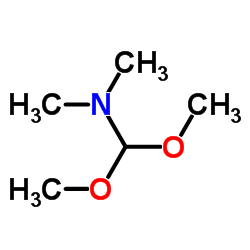 CAS#:4637-24-5
CAS#:4637-24-5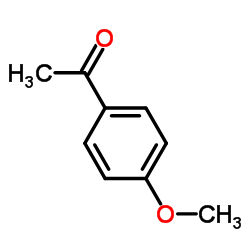 CAS#:100-06-1
CAS#:100-06-1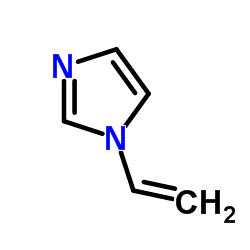 CAS#:1072-63-5
CAS#:1072-63-5 CAS#:123-11-5
CAS#:123-11-5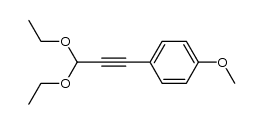 CAS#:62358-88-7
CAS#:62358-88-7 CAS#:696-62-8
CAS#:696-62-8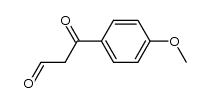 CAS#:31706-15-7
CAS#:31706-15-7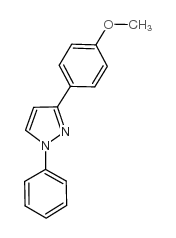 CAS#:33064-21-0
CAS#:33064-21-0 CAS#:68535-53-5
CAS#:68535-53-5